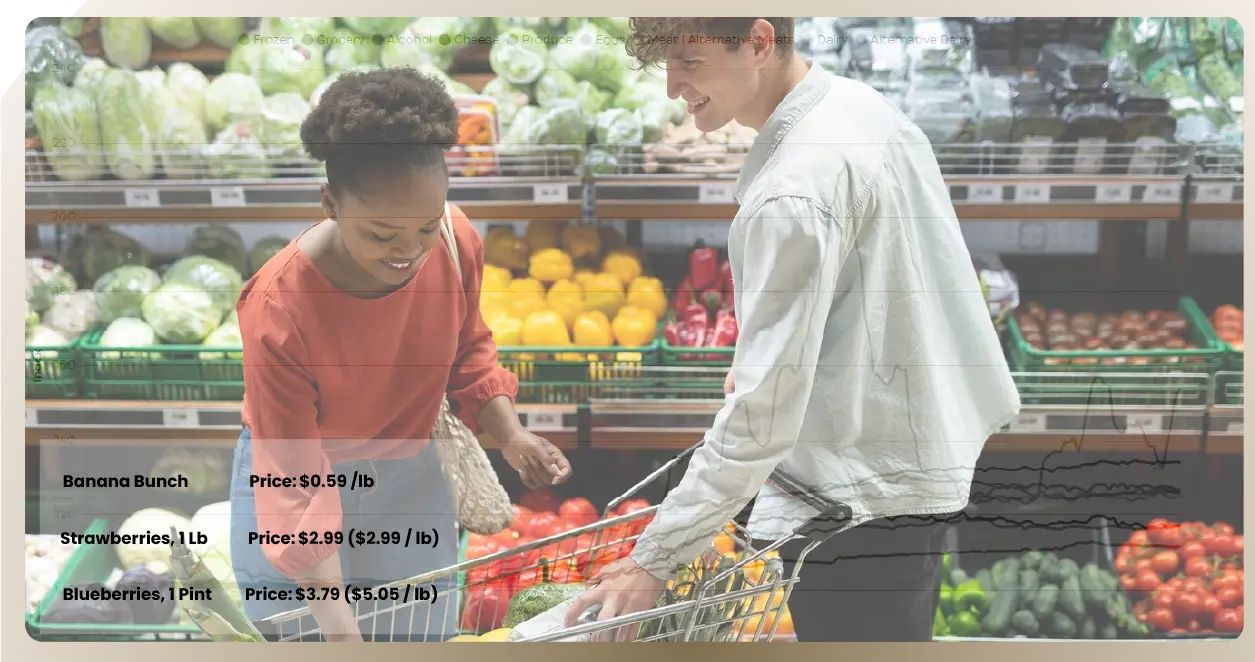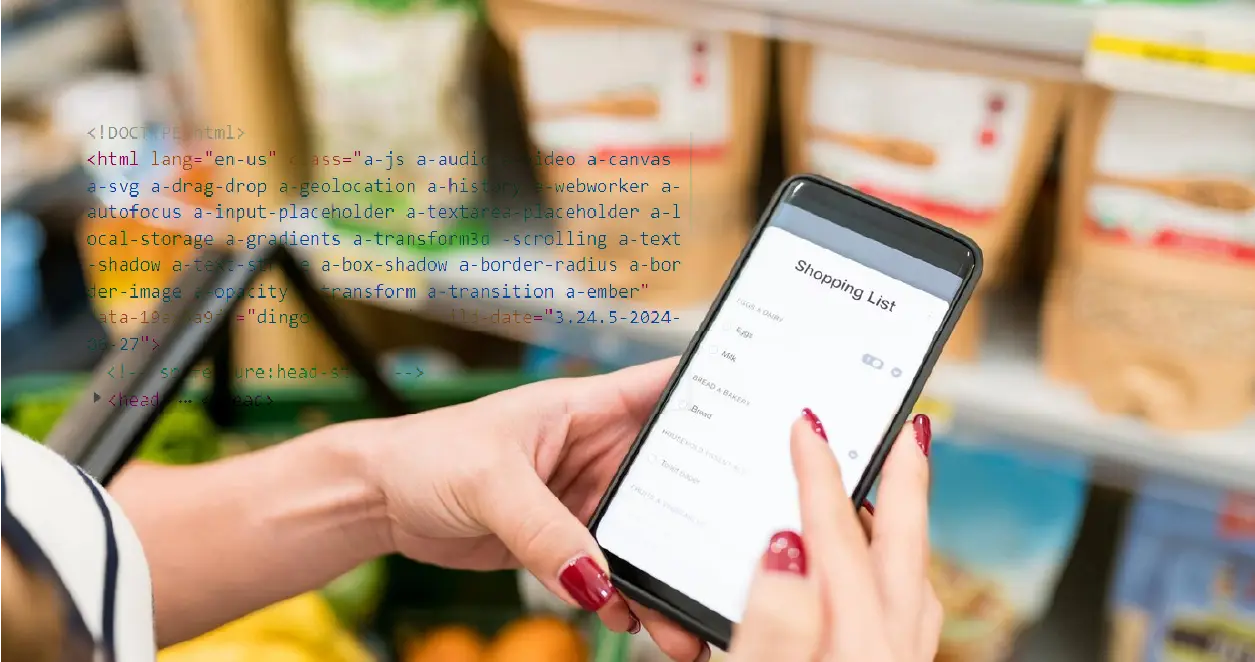Scraping grocery price lists and trends through automated tools and API has become crucial for the retail and food industries. These technologies allow the systematic collection of relevant data in real-time from multiple sources, such as online stores, supermarkets, and markets. When analyzed by businesses, such information helps to identify changes in market prices, seasonal factors, and consumers' buying trends.
Grocery scraping APIs are especially helpful during this process as they give instant, real-time data on prices and product availability across various platforms. They help businesses gain insight into competitors' price strategies and plan their price models and inventories. Furthermore, these APIs enable easy updates and scaling so that businesses can meet constantly changing market trends and customer needs.
In summary, utilizing grocery data scraping technologies and APIs can improve business decisions and the overall grocery industry by providing efficient and affordable solutions tailored to consumer preferences and budget concerns.
Why Is It Essential to Collect Data on Pricing and Trends for Grocery Items?

It is important to gather extensive information regarding pricing and trends of grocery products for retailers engaged in the trading and food industries. This information is used as a basis for decision-making and can help in making strategic decisions when understanding consumers, markets, and competitors.
Market Intelligence: Price and trend data give businesses a wealth of market information that can be understood at the most detailed level. This means that organizations can meet demand as required through consumer preference, buying cycles, and variations in demand over different seasons.
Competitive Analysis: Competitive pricing enables businesses to monitor and adapt to competitors' pricing strategies. Through this analysis of pricing benchmarking, businesses can ensure that they can set the appropriate price that will appeal to customers while at the same time ensuring that the business makes a profit.
Inventory Management: Pricing analysis gathered from grocery data scrapers assists companies in avoiding overstocking, which results from a need for more information on market prices. Analyzing past trends and forecasting demands can help organizations eliminate stockouts and overstock situations in the supply chain.
Price Optimization: Insights provide stakeholders with the information to make the right pricing decisions. By studying price elasticity and consumers' sensitivity to price fluctuations, organizations can offer optimal pricing for their products or services that will yield high sales volume and total sales returns.
Promotional Strategies: Knowledge of price changes leads to the formulation of proper promotion strategies among businesses. Every business can promote its products using discounts and promotions that align with the prevailing trends and consumer preferences.
Supply Chain Efficiency: Pricing and industry trends help managers improve supply chain operations when they are available in a timely manner. Organizations can achieve better deals with suppliers, enhance procurement procedures, and minimize the costs of acquiring, warehousing, and distributing supplies.
Thus, gathering information on prices and trends of grocery products from grocery data scraping services enables the companies to operate effectively and offer the correct value propositions that meet the consumers' needs and expectations.
Role of Scraper APIs for Collecting Grocery Data

Scraper APIs go hand in hand with grocery data collection as they help automate the data collection process from multiple online sources. These APIs provide businesses with near real-time information on pricing, product availability, and trends across multiple grocery retailers and channels. In adopting scraper APIs, the overall process of obtaining data is simplified and made more efficient, with updated details being pulled promptly.
The primary benefit of Scraping Grocery Price Lists and Trends is that they can process large amounts of data, organizing web scraping information from various sources. They also enable businesses to conduct detailed market research, track competitor pricing, and detect new trends in consumer behavior.
Scraper APIs are also easily integrated into existing applications, helping businesses avoid any manual scraping process. Apart from the time and cost savings, this provides for better operational efficiency and adaptability to changes in the market.
In general, scraper APIs enable businesses in the grocery industry to make strategic decisions, control product pricing, and increase their efficiency in managing stocks, thereby improving their position in the constantly evolving market.
The Future of Grocery Data Collection with Scraper APIs
Scraper APIs can improve grocery data acquisition in the future by applying sophisticated technologies such as machine learning and artificial intelligence. These APIs will further expand their functionality, including providing deep learning, which is used to predict consumer trends based on previous spending patterns and other market indicators.
Furthermore, it will continue to be instrumental in getting data that allows for personalization in retail, where businesses tailor products and prices to consumers.
Connectivity with IoT devices and intelligent sensors will augment data credibility and real-time tracking of inventory availability for faster supply chain operations.
Moreover, the issues of protecting data and adhering to ethical data-sharing standards will create incentives for developing more safe and transparent scraper APIs. Thus, scraper APIs will be crucial to sustain competitiveness, foster innovation, and provide customer experiences in the transforming grocery industry market.
Conclusion
Collecting price lists and analyzing grocery items, vegetables, and fruit trends through modern technologies such as scraper APIs can open doors to numerous opportunities and make businesses more efficient. Using real-time data, companies can adjust price levels, improve stock control, and adapt to customer needs in the most functional manner possible. Such a proactive approach not only enhances the competitiveness level but also contributes to the innovation of products and addresses the customers' needs. Scraping Grocery Price Lists and Trends will be critical as the grocery industry advances, giving organizations the capacity to be adaptable and timely respond to client requirements for ongoing success and development.
Are you in need of high-class scraping services? Food Data Scrape should be your first point of call. We are undoubtedly the best in Food Data Aggregator and Grocery Mobile App Scraping, and we render impeccable data analysis for strategic decision-making. With a legacy of excellence as our backbone, we help companies become data-driven, fueling their development. Please take advantage of our tailored solutions that will add value to your business. Contact us today to unlock the value of your data.
































































































